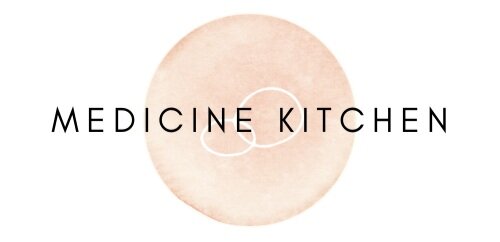Five Flavors, Six Tastes
In systems of Eastern medicine food therapy, food is classified into 5 flavors (the Chinese medicine way) or 6 tastes (the Ayurvedic way). The sixth taste in Ayurveda is something called Astringent, which is also fully recognized in Chinese medicine (especially with herbs) although since it has more to do with lingering sensation, it is not counted as a “flavor” in TCM. The 5 Flavors of TCM food dietetics are sweet, pungent, salty, sour, and bitter.
Why does the concept of 5 flavors matter? What does it have to do with our healing process and physiology? Each flavor is representative of something bigger in TCM, and carries the potential to activate and nourish different organs and functions in our bodies. This is why it’s so important to eat a diverse selection of foods in your diet, incorporating all 5 flavors into your meals. If you go too heavy on one flavor, like eating too many sweets regularly, you will find your body leaning towards imbalance - like too much weight is on one side of the scale. Finding balance is always key in Eastern medicine. I wanted to share the most basic ways to incorporate all 5 food flavors into your diet and how they will benefit you overall.
Sweet
Rice & wheat, corn, oats, carrot, sweet potato, cabbage, squash, beans, ripe fruit, fruit juices, sweeteners, whole milk, cream, most nuts, butter, beef, chicken, eggs.
The sweet flavor enters the spleen and is the most prevalent flavor in our food, harmonizing all other flavors and acting as the center of our diet. This sweet flavor does not translate to the sweet taste of refined sugar or candy - which is totally excessive and exaggerated form of sweetness, but the natural sweetness of the whole foods listed above. Excessive sweet taste can cause phlegm and dampness, contributing to weight gain, hormonal imbalance and cravings.
Pungent
Garlic, onion, scallion, ginger, chiles, pepper, mustard seed, radish, horseradish. Most cooking spices are pungent to some degree, and could be combined as pungent-sweet (like cinnamon), pungent-sour (coriander), etc.
Pungent foods enter the lungs and are great at dispersing stagnation, circulating qi, and helping to break down heavier, damp foods. They tend to lift energy up and if they are consumed too much have potential to exhaust and over-stimulate the body.
Salty
Sea salt, rock salt and any salt, seaweeds, miso, tamari.
Salty enters the kidneys and and tends to move energy down and inward towards the root of the body (where the kidneys reside). It can regulate moisture in the body and is essential for the nervous system to stay grounded.
Sour
Citrus fruits, tomato and tomato sauce, fermented foods, yogurt and some cheeses, vinegar, umeboshi plum, pickles, olives.
The sour taste is associated with the liver and helps to break down fats and prevent stagnation from sluggish digestion. Sour will stimulate secretions from the gall bladder to aid in digestion. Sour foods are generally cleansing but if over-eaten can lead to too much contraction and astringency that will actually worsen stagnation instead of help it. Moderation is key here.
Bitter
Dark leafy greens and wild greens - collards, dandelion, chicory, endive, kale, some sprouts, chard, coffee, rhubarb.
Bitterness will enter the heart and generally help cool the body down and reduce dampness and fluid accumulation. Bitter can also balance sweetness (help reduce sweet cravings) and help the body digest by guiding energy down and drying excessive moisture from sweet foods.
Astringent - this is a sensation of dryness or chalkiness that lingers in the mouth. Some foods that have an astringent nature are green & black tea, artichokes, asparagus, sprouts, cranberry. Astringent foods tend to dry, contract, or hold-on to tissue. We say that astringent herbs “stabilize and bind” in TCM, and the lightness of these foods are said to purify the body.
Happy eating :)

